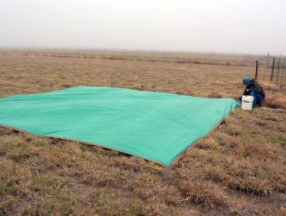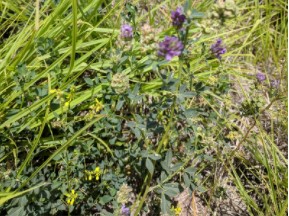Lindsey Slaughter, a member of the Soil Science Society of America, set out with her fellow researchers to test a solution that kills two birds with one stone. They put excess cow manure on these soils to see if they could make them healthier.
The team recently published their research in the Soil Science Society of America Journal.
“We know that planting perennial grasslands for cattle production can help protect and restore soil in semi-arid lands that are likely to erode and degrade from intense farming,” Slaughter says. “But producers need additional ways to increase soil carbon and nutrient stores.”
What makes a healthy or unhealthy soil?
Slaughter describes soil health as the ability of a living soil ecosystem to perform a variety of important functions. These include cycling nutrients, storing and purifying water, helping plants and animals, and more.
This “living” part is made up of various microorganisms that help a soil be healthy. They, for example, help break down materials like manure so that it and its nutrients become part of the soil.

Farm manager Paul Green of Texas Tech University anchors tarps in the pasture just before compost was spread onto the fields. This created treatment areas in each field where compost application was excluded.
“Improving the soil’s ability to perform these roles and support plant and animal life is our target for soil health,” Slaughter says. “Adding the manure can provide a boost of material that can be incorporated into soil organic matter. This helps provide a stronger foundation for more microbial activity and nutrient cycling.”
This is why in their study they applied a low one-time amount of manure to two types of pastures to look into this. The pastures they put the manure on had either grass only that was fertilized occasionally or were a mix of grass and legumes that was not fertilized.
Manure helps, but results take time
Overall, they did find that manure helped increase soil organic carbon and the number of microbes in the soil. These are two important characteristics of a healthy soil.
It took almost a year and a half to see these changes, although they say this is not totally surprising.
“This tells us that it can take a long time for even a little added compost to become incorporated into the soil organic matter of semi-arid grasslands, but it definitely helps,” Slaughter explains.

Some of the research pastures included warm-season old world bluestem grass (left) mixed with legumes including alfalfa (purple blooms, center) and yellow sweetclover (yellow blooms, lower left). The legumes provide an organic source of nitrogen to the grasses and microbes, as well as a source of protein for grazing cattle in the pastures.
“We think this is mostly due to the dry climate at our study site,” says Slaughter. “We commonly get little rainfall per year. The microbial community was not able to work quickly or efficiently to decompose the manure without water.”
Their results also showed that the pastures receiving fertilizer responded better to the manure. They believe this is because the nitrogen in the fertilizer helped the microbes decompose the manure better.
“Microbes help directly with releasing nutrients from organic material in a form that plants can use, as well as decomposing those residues to build soil organic matter,” Slaughter says. “A lot of work has been done on how this can help improve cropping systems. However, we wanted to also test this on forage pastures.”
Click here to see more...